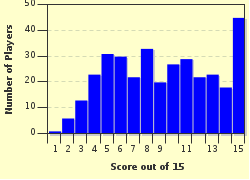Quiz Answer Key and Fun Facts
1. After defeats at Jena and Auerstaedt in 1806, and finally at Friedland in 1807, Prussia along with Russia signed a peace treaty with Napoleon. What was the name of this treaty?
2. The Iron Cross was first introduced on March 10, 1813 as a new decoration to honor Prussian military service. Which of the following is NOT true regarding it?
3. As a result of the Congress of Vienna, after the defeat of Napoleon in 1815, Prussia received several new territories which enhanced its status as a European great power. Which of the following was NOT given to Prussia?
4. In 1834, Prussia created the German Customs Union (Zollverein) which reduced internal trade barriers within the member states of the German Confederation. Which of these statements is true regarding the Customs Union?
5. Which year did the German revolution occur, in which nationalists made attempts at first creating a unified Germany under Prussian leadership?
6. Who was the Prussian Chief of Staff who crafted the brilliant strategic plans of the Austro-Prussian war(1866), and the Franco-Prussian War (1870)?
7. Which of the following was allied with Prussia in the war against Austria in 1866?
8. After the Prussian victory against Austria at Koniggraetz in 1866, Austria's infuence within Germany came to and end. Prussia annexed several German territories and, together with most other German states, created what federal entity in 1867?
9. Name the King of Prussia during the Austro-Prussian, and Franco-Prussian wars.
10. During the Franco-Prussian war, the armies of Prussia and the allied German states were able to overcome an initial French advance on Saarbruecken and eventually push Napoleon III's armies to defeat. Where did the surrender of Napoleon's Army of Chalon take place?
11. What final military operation eventually ended the Franco-Prussian war in early 1871?
12. The German victory in the Franco-Prussian War allowed Bismarck to unite the North German Confederation with the south German states and create the German Empire. On what day, at the Palace of Versailles, was the German Empire proclaimed?
13. In 1879, Germany signed a lasting mutual defense alliance with what European power?
14. In 1878 Bismarck persuaded the Reichstag to pass the Anti-Socialist Law in Germany. What did this law do?
15. Who was the last Hohenzollern monarch of Prussia and Germany in the 19th century and ultimately abdicated his throne at the end of World War I?
Source: Author
rwillia1
This quiz was reviewed by FunTrivia editor
bloomsby before going online.
Any errors found in FunTrivia content are routinely corrected through our feedback system.
